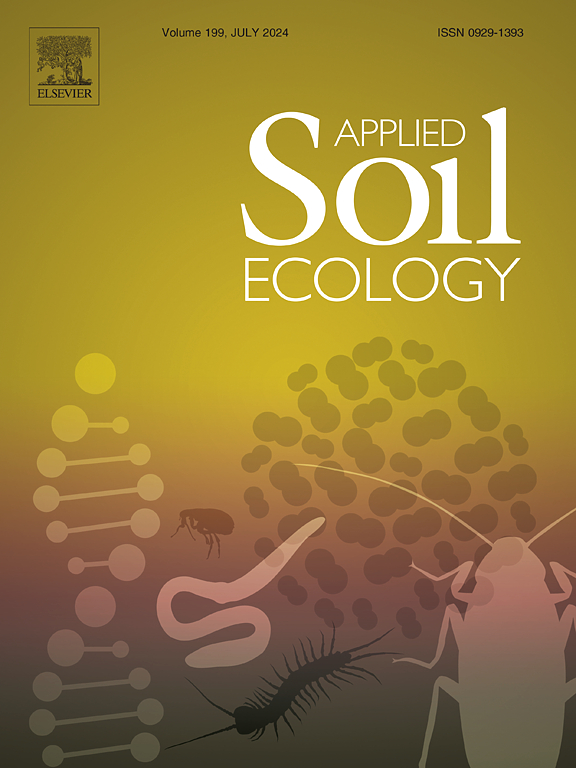Origin and assembly characteristics of periphyton microbes in subtropical paddy fields: A case study in Tuojia catchment in Southern China
IF 4.8
2区 农林科学
Q1 SOIL SCIENCE
引用次数: 0
Abstract
Periphyton, comprising a group of bacteria, algae, fungi, and protozoa that grow on the surface of various substrates submerged in water, plays a crucial role in regulating nutrient cycles, such as nitrogen and phosphorus. Determining the microbial assembly process and origin of paddy periphyton, thus, could help understand the function of periphyton in nutrient cycling. In the present study, we collected soil, overlying water, and periphyton samples from paddy fields in a small subtropical catchment in Tuojia, Southern China, to analyze the soil and microbial contribution to the source of periphyton and its assembly mechanisms using amplicon sequencing, SourceTracker, and iCAMP (Infer Community Assembly Mechanisms by Phylogenetic-bin-based null model analysis). Our data showed that periphyton were widely distributed in paddy fields, with lower bacterial alpha diversity and higher eukaryotic diversity than those in the soil, and the periphyton had abundant Cyanobacteria (13.5–33.5 %), Chlorophyta (23.3–90.0 %), Bacillariophyta (5.4–40.9 %), and Nematoda (1.3–17.3 %). Overlying water was an important source of periphyton eukaryotes than that of soil (63.7 % vs. 10.0 %); however, both overlying water and soil contributed equally to the periphyton bacterial sources (38.4 % vs. 41.6 %). The periphyton community assembly was primarily driven by homogeneous selection, dispersal limitation, and drift. Homogeneous selection (50.9 %) was more significant in shaping the eukaryotic community, whereas stochastic processes (i.e., dispersal limitation and drift; 61.5 %) were more dominant in shaping the periphyton bacterial community. Our data suggest eukaryotic and bacterial community in periphyton may be controlled by two main abiotic factors: soil ammonium (NH4+-N) and Olsen phosphorus (Olsen-P). Our results reveal the potential contributions of paddy soil, overlying water, and ecological processes in shaping periphyton microbial communities in paddy fields.
求助全文
约1分钟内获得全文
求助全文
来源期刊

Applied Soil Ecology
农林科学-土壤科学
CiteScore
9.70
自引率
4.20%
发文量
363
审稿时长
5.3 months
期刊介绍:
Applied Soil Ecology addresses the role of soil organisms and their interactions in relation to: sustainability and productivity, nutrient cycling and other soil processes, the maintenance of soil functions, the impact of human activities on soil ecosystems and bio(techno)logical control of soil-inhabiting pests, diseases and weeds.
 求助内容:
求助内容: 应助结果提醒方式:
应助结果提醒方式:


